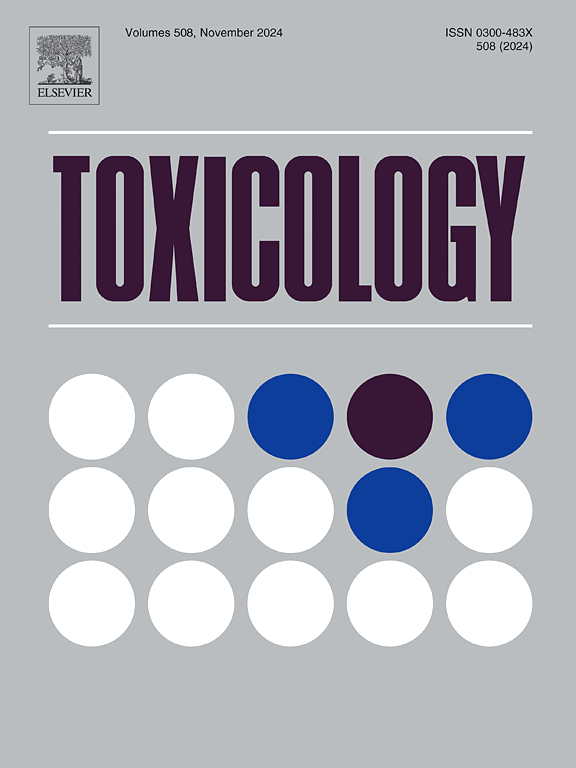Deficiency of aldehyde dehydrogenase 2 sensitizes cells to glutamate-induced cytotoxicity via elevation of GluN1 expression
IF 4.6
3区 医学
Q1 PHARMACOLOGY & PHARMACY
引用次数: 0
Abstract
Glutamate is the principal excitatory neurotransmitter in the central nervous system. It is essential for neurotransmission and synaptic plasticity; however, excessive glutamate leads to neuronal toxicity, which is considered as a key mechanism contributing to neurodegeneration. Aldehyde dehydrogenase 2 (ALDH2) is a key enzyme in ethanol metabolism, which converts the toxic alcohol metabolite acetaldehyde to acetate; meanwhile, ALDH2 is also important for the detoxification of other reactive aldehydes such as lipid peroxidation product 4-hydroxy-2-nonenal. ALDH2 deficiency has been associated with the acceleration of neurodegeneration and cognitive impairment accompanied by increased brain oxidative damages. However, there is a lack of reports on how ALDH2 deficiency affects glutamate-induced cytotoxicity. In the present study, it was found that ALDH2-deficient N2a cells exhibited heightened susceptibility to glutamate, displaying aggravated oxidative stress, mitochondrial dysfunction, and calcium imbalance in response to glutamate. ALDH2 deficiency led to reduced antioxidant capacity and elevated intracellular calcium concentration at basal state, thus predisposing the cells to a higher sensitivity to glutamate. Further analyses showed that ALDH2 deficiency elevated the expression of GluN1 subunit of N-methyl-D-aspartate receptors (NMDARs), which are major ionic glutamate receptors allowing the passage of calcium. Consistently, treatment with the NMDAR channel blocker MK-801 (100 μM) or knockdown of GluN1 reduced the susceptibility of Aldh2-/- cells to glutamate, suggesting that the elevation of GluN1 was a key determinant for the increased sensitivity of ALDH2-deficient cells to glutamate-induced cytotoxicity. The results demonstrated that ALDH2 plays a critical protective role in glutamate-induced neuronal cytotoxicity, while blocking the overactivation of NMDARs might be beneficial for preventing glutamate-induced neuronal toxicity in individuals with defective ALDH2.
醛脱氢酶2缺乏通过升高GluN1表达使细胞对谷氨酸诱导的细胞毒性敏感。
谷氨酸是中枢神经系统中主要的兴奋性神经递质。它对神经传递和突触可塑性至关重要;然而,过量的谷氨酸导致神经元毒性,这被认为是导致神经退行性变的关键机制。醛脱氢酶2 (ALDH2)是乙醇代谢的关键酶,它将有毒的酒精代谢物乙醛转化为乙酸;同时,ALDH2对脂质过氧化产物4-羟基-2-壬烯醛等其他活性醛的解毒也很重要。ALDH2缺乏与神经变性和认知障碍的加速相关,并伴有脑氧化损伤的增加。然而,缺乏关于ALDH2缺乏如何影响谷氨酸诱导的细胞毒性的报道。在本研究中,我们发现aldh2缺陷的N2a细胞对谷氨酸的易感性增加,对谷氨酸的反应表现出氧化应激加重、线粒体功能障碍和钙失衡。ALDH2缺乏导致抗氧化能力降低和细胞内钙浓度升高,从而使细胞对谷氨酸具有更高的敏感性。进一步的分析表明,ALDH2缺乏升高了n -甲基- d -天冬氨酸受体(NMDARs) GluN1亚基的表达,NMDARs是允许钙通过的主要谷氨酸离子受体。一致地,用NMDAR通道阻断剂MK-801 (100μM)或敲低GluN1可降低Aldh2-/-细胞对谷氨酸的敏感性,这表明GluN1的升高是Aldh2缺陷细胞对谷氨酸诱导的细胞毒性敏感性增加的关键决定因素。结果表明,ALDH2在谷氨酸诱导的神经元细胞毒性中起着关键的保护作用,而阻断NMDARs的过度激活可能有助于预防ALDH2缺陷个体的谷氨酸诱导的神经元毒性。
本文章由计算机程序翻译,如有差异,请以英文原文为准。
求助全文
约1分钟内获得全文
求助全文
来源期刊

Toxicology
医学-毒理学
CiteScore
7.80
自引率
4.40%
发文量
222
审稿时长
23 days
期刊介绍:
Toxicology is an international, peer-reviewed journal that publishes only the highest quality original scientific research and critical reviews describing hypothesis-based investigations into mechanisms of toxicity associated with exposures to xenobiotic chemicals, particularly as it relates to human health. In this respect "mechanisms" is defined on both the macro (e.g. physiological, biological, kinetic, species, sex, etc.) and molecular (genomic, transcriptomic, metabolic, etc.) scale. Emphasis is placed on findings that identify novel hazards and that can be extrapolated to exposures and mechanisms that are relevant to estimating human risk. Toxicology also publishes brief communications, personal commentaries and opinion articles, as well as concise expert reviews on contemporary topics. All research and review articles published in Toxicology are subject to rigorous peer review. Authors are asked to contact the Editor-in-Chief prior to submitting review articles or commentaries for consideration for publication in Toxicology.
 求助内容:
求助内容: 应助结果提醒方式:
应助结果提醒方式:


